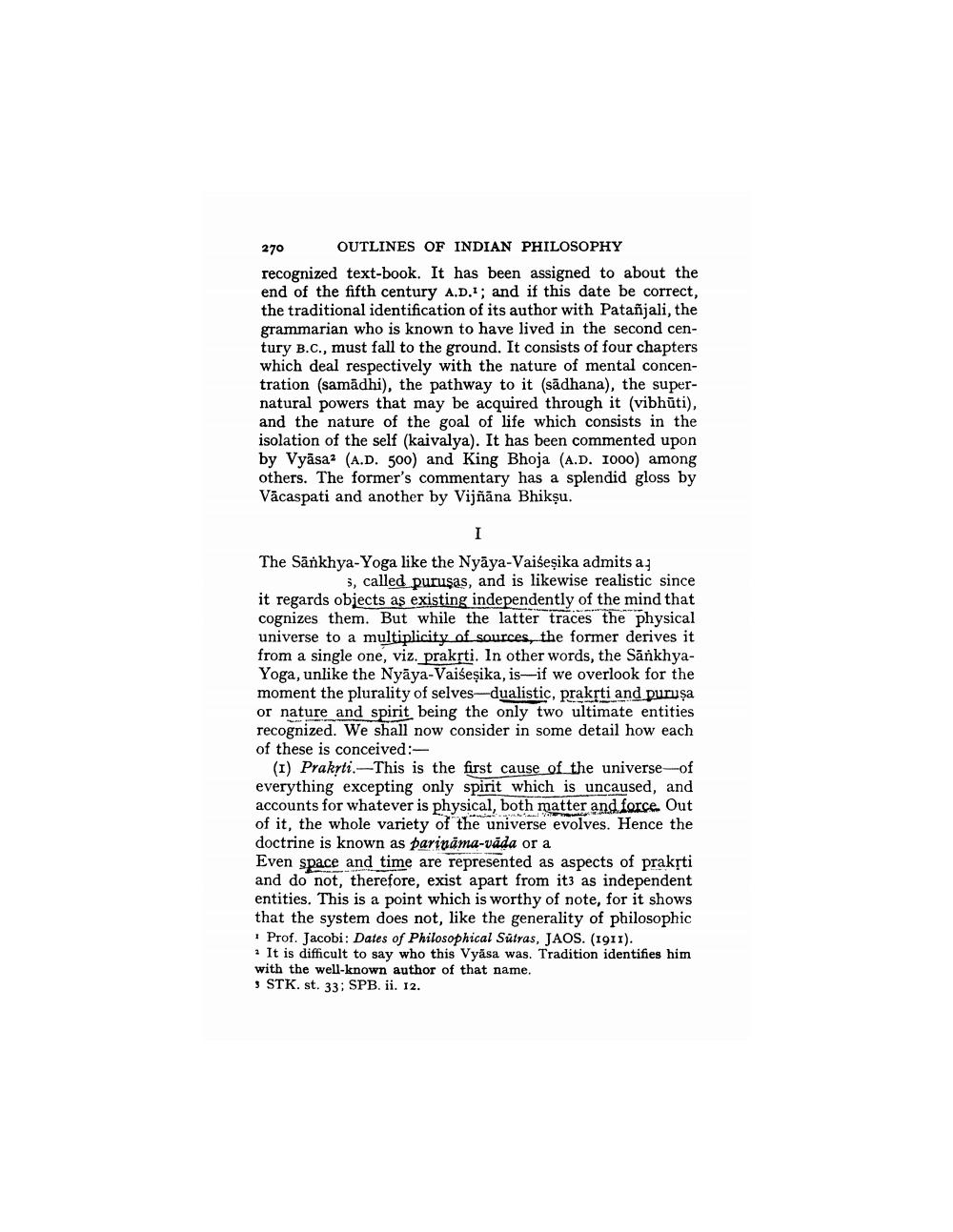________________
270 OUTLINES OF INDIAN PHILOSOPHY recognized text-book. It has been assigned to about the end of the fifth century A.D.; and if this date be correct, the traditional identification of its author with Patañjali, the grammarian who is known to have lived in the second century B.C., must fall to the ground. It consists of four chapters which deal respectively with the nature of mental concentration (samadhi), the pathway to it (sādhana), the supernatural powers that may be acquired through it (vibhūti), and the nature of the goal of life which consists in the isolation of the self (kaivalya). It has been commented upon by Vyāsa2 (A.D. 500) and King Bhoja (A.D. 1000) among others. The former's commentary has a splendid gloss by Vācaspati and another by Vijñāna Bhikṣu.
The Sankhya-Yoga like the Nyāya-Vaiseșika admits a:
3, called purusas, and is likewise realistic since it regards objects as existing independently of the mind that cognizes them. But while the latter traces the physical universe to a multiplicity of sources, the former derives it from a single one, viz. prakrti. In other words, the SankhyaYoga, unlike the Nyāya-Vaišeşika, is-if we overlook for the moment the plurality of selves-dualistic, prakrti and puruşa or nature and spirit being the only two ultimate entities recognized. We shall now consider in some detail how each of these is conceived :
(I) Prakrti. This is the first cause of the universe-of everything excepting only spirit which is uncaused, and accounts for whatever is physical, both matter and force. Out of it, the whole variety of the universe evolves. Hence the doctrine is known as parināma-vāda or a Even space and time are represented as aspects of praksti and do not, therefore, exist apart from its as independent entities. This is a point which is worthy of note, for it shows that the system does not, like the generality of philosophic
Prof. Jacobi: Dates of Philosophical Sütras, JAOS. (1911). 1 It is difficult to say who this Vyasa was. Tradition identifies him with the well-known author of that name. 3 STK. st. 33: SPB. ii. 12.




